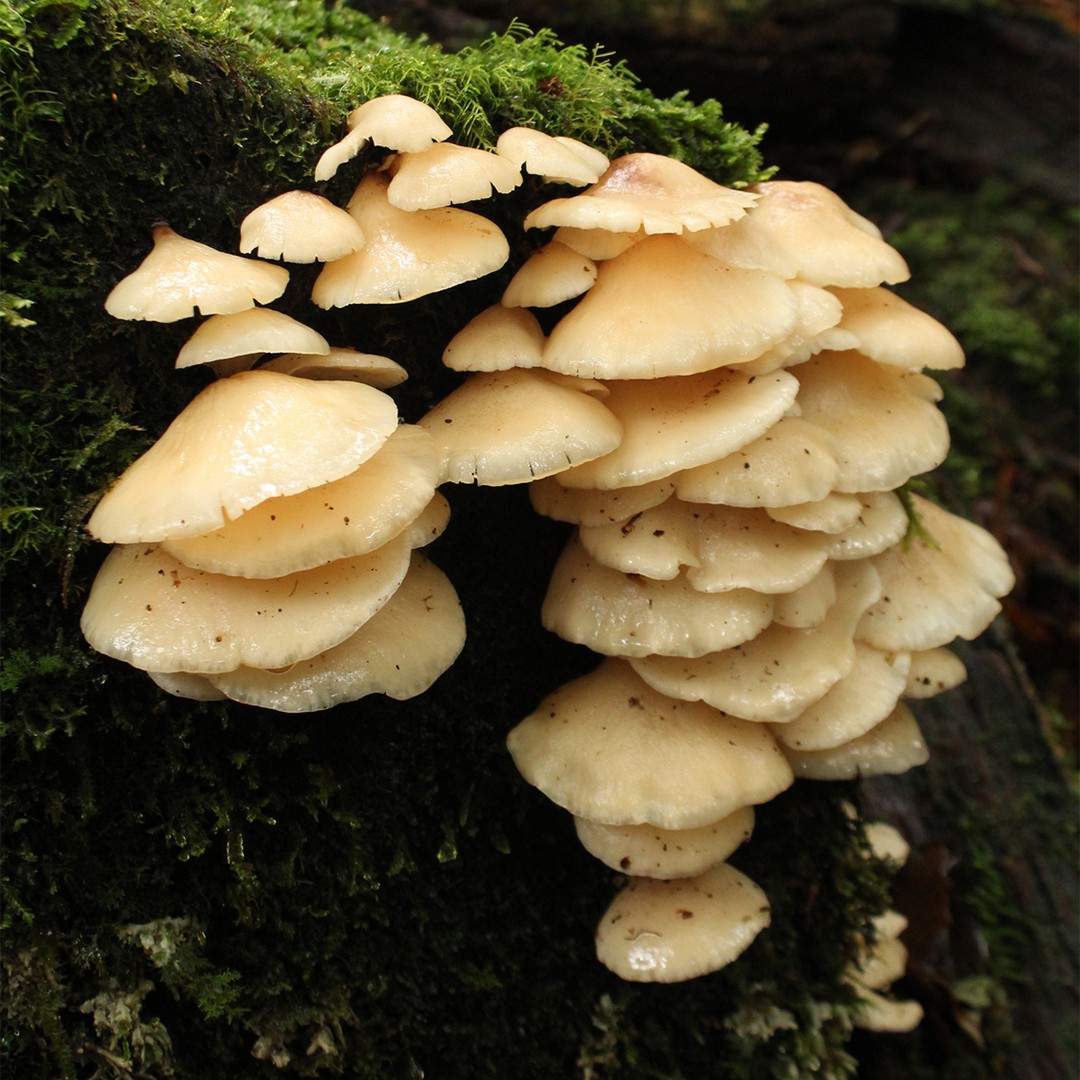Cyphellaceae
الاسم العلمي: Cyphellaceae
Cyphellaceae
الاسم العلمي: Cyphellaceae
 Photo By Leo botanist
Photo By Leo botanist الوصف
النوع الأكثر شهرة منها هو Chondrostereum purpureum. بعد أن يبدأ فقط كقشرة على الخشب، تتطور البنية الثمرية إلى حوامل متموجة متشابكة تصل إلى حوالي 1.2 بوصة عرضًا، والتي لها ملمس مطاطي صلب. تظهر الحواف والأسطح السفلية الخصبة لونًا أرجوانيًا زاهيًا إلى حد ما بينما ينمو الفطر، وللأسطح العلوية مظهر رمادي (أحيانًا مع تقسيم إلى مناطق) وتكون مغطاة بشعر أبيض. بعد أسبوع أو أسبوعين، تجف الثمرة، وتصبح هشة، وتتحول إلى لون بني باهت أو بيج.
أنواع من Cyphellaceae

 Photo By Leo botanist
Photo By Leo botanist